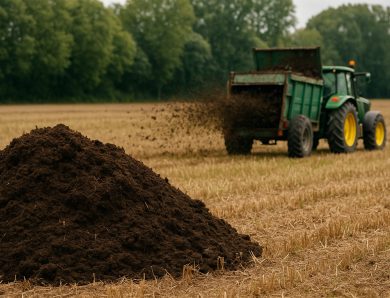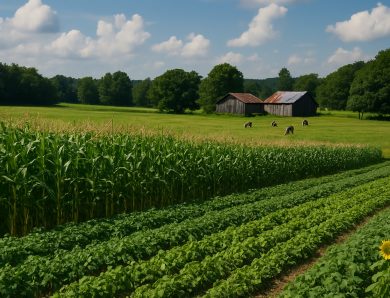
How Natural Events Impact Farming in New Zealand
New Zealand’s farms face a diverse range of challenges brought about by natural events. Changes in weather and the earth’s movements directly influence the livelihood of those who work the land. This article outlines the various effects of natural events on agricultural operations and offers insights into how the farming community responds.
Understanding Natural Influences
Weather patterns and geological shifts shape the farming landscape. Heavy rains, prolonged dry spells, and sudden ground tremors do more than alter the scenery—they disrupt planting cycles, soil quality, and the availability of resources. Farmers continuously monitor these conditions to adjust their methods. In many cases, successful operations depend on timely reactions to these unpredictable challenges.
Impacts on Crop Production
Crop yields can suffer dramatically when natural events occur. For instance:
- Floods: Excessive rainfall can saturate fields, washing away nutrients and damaging root systems. Standing water may also encourage the spread of plant diseases, reducing crop quality.
- Droughts: Extended periods without rain lower soil moisture levels, stunting plant growth and affecting the harvest. Drought conditions force farmers to modify irrigation practices and seek drought-resistant crop varieties.
- Earthquakes: Shifts in the earth can cause soil displacement, altering field topology. This may require farmers to reconfigure their planting layouts or invest in soil restoration to regain productivity.
Farmers often keep a close eye on weather forecasts and check the latest earthquake updates to stay prepared for any disruptions.
Effects on Livestock
Livestock operations face their own set of challenges when natural events occur. Changes in the environment can lead to:
- Contaminated Pastures: Floodwaters may carry pollutants that make grazing areas unsafe, forcing livestock to be moved temporarily.
- Feed Shortages: Drought conditions limit the growth of pasture and fodder, leading to potential shortages in animal feed. This requires adjustments in feeding routines and sometimes even supplemental feeding.
- Structural Damage: Earthquakes can compromise the integrity of animal shelters. Damage to barns and holding areas puts both animals and farmworkers at risk, necessitating immediate repairs and better building standards.
Each impact requires swift action to ensure the health and productivity of animals while minimizing stress and financial loss for the farmers.
Supply Chain Disruptions
Natural events have a ripple effect that extends beyond the farm. Food supply chains can be disrupted in several ways:
- Transportation Delays: Roads and bridges may be damaged or flooded, delaying the movement of produce and livestock. This can result in spoilage or reduced market value.
- Market Fluctuations: Sudden drops in supply may lead to price volatility. The economic impact reaches not only farmers but also consumers, who may face higher costs at the checkout.
- Processing Bottlenecks: Factories and processing facilities depend on a steady supply of raw materials. Interruptions in production at the farm level can cause delays in processing and distribution, affecting the entire supply chain.
Farmers, distributors, and retailers must work together to create contingency plans that mitigate these risks.
Adaptive Strategies in the Field
New Zealand’s farming community has a long history of adapting to nature’s challenges. Some common strategies include:
- Infrastructure Upgrades: Strengthening farm structures and investing in advanced irrigation systems can reduce damage during extreme events.
- Diverse Crop Selection: Planting a mix of crop varieties helps to spread risk. Different crops may react differently to the same event, ensuring that not all production is lost simultaneously.
- Collaborative Networks: Many farmers join local associations to share insights and resources during adverse conditions. This support network facilitates the rapid dissemination of critical information.
- Technological Integration: Modern farming now integrates real-time monitoring tools to track weather patterns and seismic activity. These systems provide alerts that allow farmers to take timely protective measures.
Community Resilience
The collective experience of New Zealand’s agricultural community has cultivated a culture of preparedness. Local governments and industry groups often partner with farmers to develop emergency response plans. Educational programs focus on sustainable practices that not only improve yield under normal circumstances but also safeguard operations against unexpected events.
By understanding the specific impacts of natural events, the farming sector can implement measures that reduce risk and ensure food security. Adaptability, informed decision-making, and mutual support are key components that help New Zealand’s agriculture thrive despite the challenges posed by nature.




No Comment